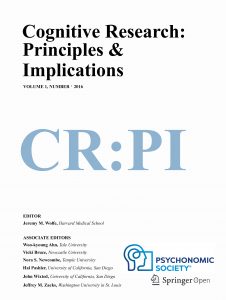吉川左紀子特定教授と上田祥行特定講師らの研究論文が『Cognitive Research: Principles and Implications』に掲載されました
吉川左紀子特定教授と上田祥行特定講師が、ヨーク大学のロブ・ジェンキンス准教授とジェット・サンダースさん(現・ロンドン・スクール・オブ・エコノミクス助教)と一緒に行った研究論文が、Cognitive Research: Principles and Implicationsに掲載されました。
本物の顔のように見えるシリコン製マスクをかぶった写真と、本物の顔の写真との区別が困難であることを、日英の大学における実験で明らかにした研究論文です。顔写真の見た目だけに頼った犯罪対策のもろさと、どういった情報が有効なのかを示唆しています。
ヨーク大学のプレスリリース:
動画はこちらから:
(リンク先は英語ですが、実際のシリコン製マスクの映像がご覧いただけます)
Sanders, J. G., Ueda, Y., Yoshikawa, S., & Jenkins, R. (2019).
More human than human: a Turing test for photographed faces
Cognitive Research: Principles and Implications, 43.
https://cognitiveresearchjournal.springeropen.com/articles/10.1186/s41235-019-0197-9
Background
Recent experimental work has shown that hyper-realistic face masks can pass for real faces during live viewing. However, live viewing embeds the perceptual task (mask detection) in a powerful social context that may influence respondents’ behaviour. To remove this social context, we assessed viewers’ ability to distinguish photos of hyper-realistic masks from photos of real faces in a computerised two-alternative forced choice (2AFC) procedure.
Results
In experiment 1 (N = 120), we observed an error rate of 33% when viewing time was restricted to 500 ms. In experiment 2 (N = 120), we observed an error rate of 20% when viewing time was unlimited. In both experiments we saw a significant performance cost for other-race comparisons relative to own-race comparisons.
Conclusions
We conclude that viewers could not reliably distinguish hyper-realistic face masks from real faces in photographic presentations. As well as its theoretical interest, failure to detect
synthetic faces has important implications for security and crime prevention, which often rely on facial appearance and personal identity being related
2019/11/26
